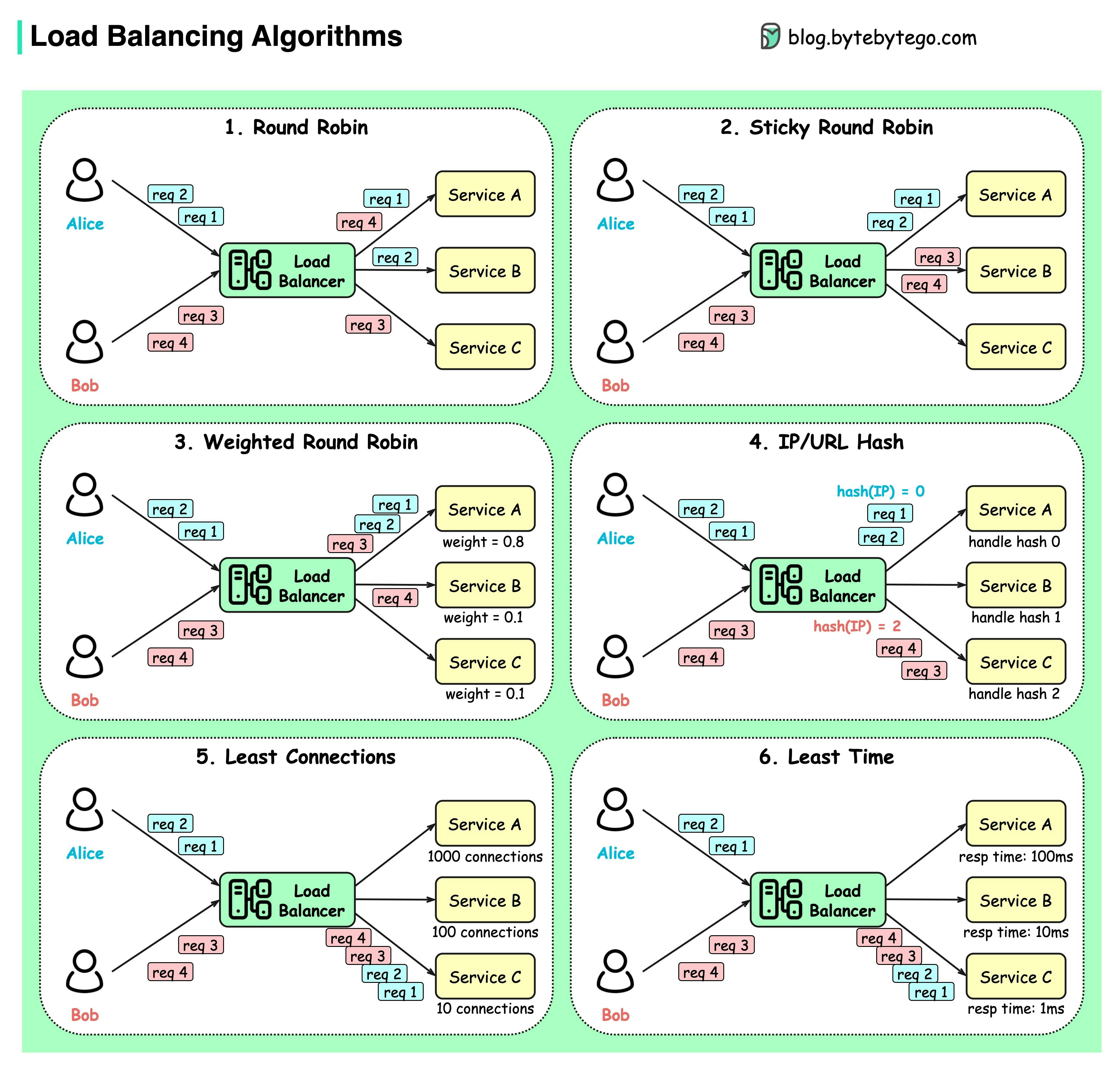Load-Balancing Algorithms: A Deep Dive
Exploring Round Robin, Least Connection, and More for Optimal Performance
Unraveling Load-Balancing Algorithms: A Comprehensive Overview
Introduction
Load balancing is critical to managing network resources efficiently, ensuring optimal resource utilization, maximizing throughput, minimizing response time, and preventing overload 2. This white paper aims to provide a comprehensive overview of the most common load-balancing algorithms, their applications, and their impact on system performance.
Round Robin Algorithm
Round Robin is the most straightforward and most commonly used load-balancing algorithm. It distributes client requests to application servers in a simple rotation. This algorithm is most appropriate for predictable client request streams spread across a server farm with relatively equal processing capabilities and available resources 1 9.
Least Connection Algorithm
The Least Connection algorithm is a dynamic load-balancing method where client requests are distributed to the application server with the least number of active connections at the time the client request is received. This technique is most appropriate for incoming requests with varying connection times and a set of relatively similar servers in terms of processing power and available resources 1.
Weighted Round Robin Algorithm
The Weighted Round Robin algorithm is an extension of the Round Robin algorithm. It assigns more requests to the server with a higher capability of handling a greater load. This algorithm is best suited for clusters consisting of servers with different specifications9.
Least Loaded Scheduler Algorithm
The Least Loaded Scheduler algorithm is similar to the Least Connection scheduling. It is a dynamic policy that requires calculating each server's load size when forwarding a request. This algorithm provides an optimum load balancing by sharing the request based on the actual physical load on the server2.
Consistent Hash Algorithm
The Consistent Hash algorithm is best for load-balancing large numbers of cache servers with dynamic content. It inherently combines load balancing and persistence, minimizing the need to add a persistence method. This algorithm is 'consistent' because adding or removing a server does not cause a complete recalculation of the hash table 7.
Random Algorithm
The Random load balancing method should be used for distributed environments where multiple load balancers pass requests to the same backends. Other load balancing methods, such as round robin, least connections, and least time, should be used for environments where the load balancer has a complete view of all requests. 3.
In conclusion, the choice of a load-balancing algorithm depends on the specific requirements and characteristics of the system. It is crucial to understand the strengths and weaknesses of each algorithm to make an informed decision that optimizes resource distribution and enhances system performance.

Image credit bytebytego.com

